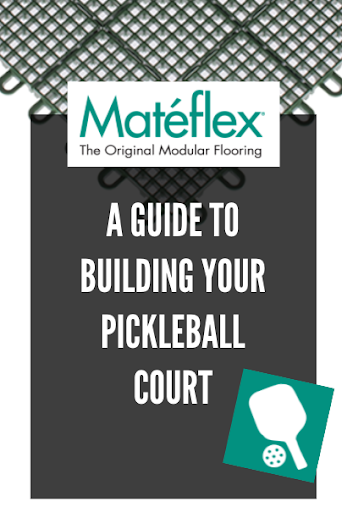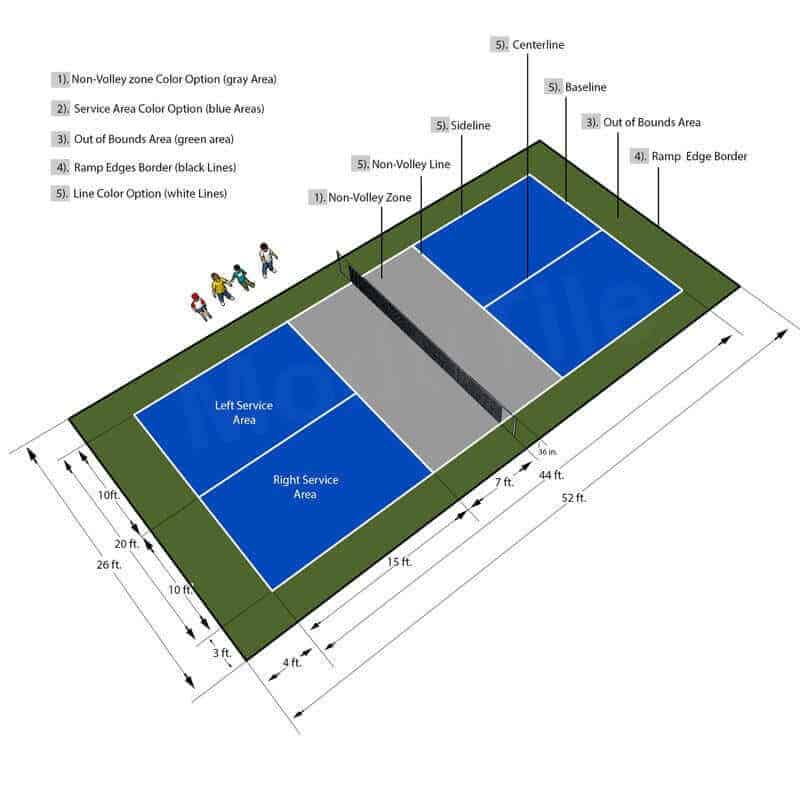Lasting Practices in Pickleball Court Construction You Should Know
As the popularity of pickleball continues to increase, so as well does the requirement for lasting methods in court building. This technique not just addresses environmental issues yet also enhances the durability and capability of the courts. From selecting eco-friendly materials to carrying out effective water drainage and energy-saving lighting remedies, there are various approaches to take into consideration. The impact of these methods expands much beyond the court itself. Recognizing just how each aspect adds to a more sustainable future welcomes better expedition into the intricate balance between entertainment development and ecological stewardship.
Picking Eco-Friendly Products
Picking eco-friendly materials is a vital action in the construction of sustainable pickleball courts. The option of sustainable materials not only decreases ecological influence yet also enhances the longevity and performance of the court. Secret materials consist of reused rubber for the surface area, which uses exceptional resilience and shock absorption while drawing away waste from landfills.
In addition, using locally sourced materials decreases transport emissions and supports local economic climates. Pickleball court construction. For instance, making use of indigenous woods for secure fencing and seats can give a sustainable aesthetic while making certain resilience versus the aspects.
Incorporating permeable products for court structures can further add to sustainability by enabling for all-natural water drainage and decreasing overflow. These selections not only safeguard regional ecosystems but additionally promote healthier play atmospheres.
Effective Drainage Solutions
While the option of eco-friendly products is important, carrying out effective drainage services is similarly vital for keeping sustainable pickleball courts. Appropriate drain not just protects the court surface area from water damages but additionally minimizes erosion and overflow, promoting environmental stability.
Efficient drain systems can consist of absorptive paving, which enables water to infiltrate the ground as opposed to merging externally. This decreases the probability of standing water, which can result in mold and other maintenance problems. Additionally, integrating purposefully put water drainage networks and swales can guide excess water away from the court location, making certain a dry playing surface and preventing dirt disintegration.
Utilizing indigenous greenery in the landscaping around the courts can even more improve drain by absorbing excess water and lowering runoff. These plants require much less watering and promote biodiversity, aligning with sustainable practices.
Moreover, it is essential to regularly preserve the drain system to ensure its long-term efficiency. This includes clearing up debris and surveillance for obstructions. By prioritizing efficient water drainage solutions, pickleball court producers can substantially contribute to the sustainability and long life of the facility, inevitably benefiting both gamers and the atmosphere.
Energy-Efficient Lighting Options
As the need for pickleball remains to grow, integrating energy-efficient lights options right into court design has become significantly vital for sustainability. Standard lights systems typically eat extreme power, adding to greater functional prices and environmental influence. Consequently, adopting modern, energy-efficient technologies is vital for both brand-new constructions and restorations.
LED (Light Emitting Diode) lights stands out as a premier choice because of its longevity and energy cost savings (Pickleball court construction). Compared to traditional lighting, LEDs use around 75% much less energy and can last as much as 25 times longer, considerably decreasing upkeep expenses. The directional nature of LED lighting reduces light contamination, guaranteeing that lighting is concentrated on the court instead than surrounding areas.

Lasting Surface Area Alternatives
Exploring lasting surface alternatives for pickleball courts has actually acquired grip among gamers and building contractors alike. The focus on environmentally friendly their website materials not just lines up with the growing environmental awareness yet likewise improves the performance and resilience of the courts.
One prominent choice is making use of recycled rubber, which can be sourced from utilized tires. This product gives outstanding shock absorption, decreasing the risk of injuries for gamers while promoting sustainability. In addition, modular tiles made from recycled plastics offer an additional viable alternative. These floor tiles are easy to replace and set up, pop over to this site and their flexibility enables various court configurations.
Natural turf courts are also arising as a sustainable option, promoting biodiversity and decreasing the warmth island impact. Nonetheless, they call for regular upkeep and water, which may not straighten with all sustainability goals.

Water Preservation Techniques

An additional reliable method involves the setup of rainwater harvesting systems. These systems gather and store rain for use in keeping court surfaces and landscape design. This method not only preserves potable water yet likewise decreases reliance on community sources.
Additionally, employing drought-resistant landscaping around the courts is essential. Indigenous plants need less water and are much better adjusted to local climate problems, therefore decreasing general water intake. In addition, utilizing reliable watering systems, such as drip watering, makes sure that water is provided straight to plant origins, minimizing dissipation and waste.
Verdict
Incorporating sustainable techniques in pickleball court construction substantially adds to ecological conservation and resource Learn More Here effectiveness. By focusing on these practices, the construction of pickleball courts can align with more comprehensive ecological objectives while promoting longevity and performance within neighborhoods.
As the appeal of pickleball proceeds to climb, so too does the demand for sustainable practices in court building and construction.Picking eco-friendly products is a crucial action in the building and construction of lasting pickleball courts. By prioritizing energy-efficient lighting alternatives, pickleball court fabricators can contribute to a more lasting future while fulfilling the requirements of stakeholders and gamers alike.Integrating sustainable surface area alternatives not just improves the performance of pickleball courts yet additionally paves the means for implementing efficient water preservation techniques.Integrating lasting techniques in pickleball court building and construction substantially contributes to environmental preservation and source efficiency.